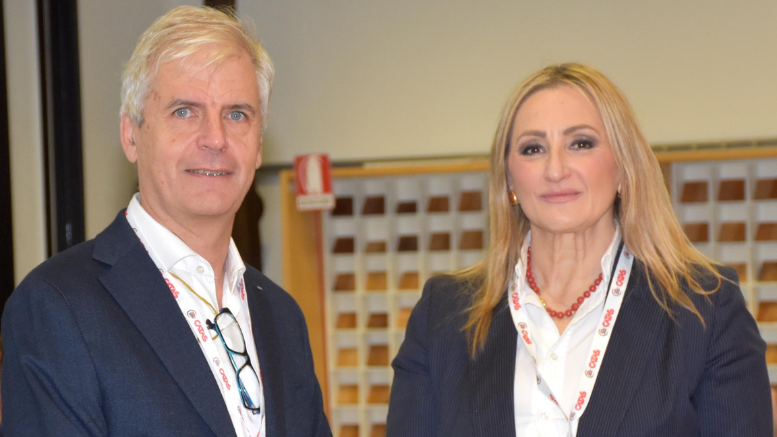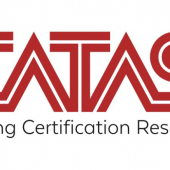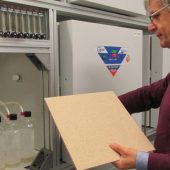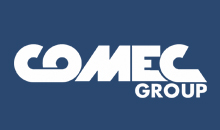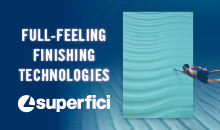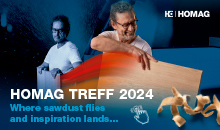Technicians, entrepreneurs and operators in the wood-furniture supply chain met yesterday in San Giovanni al Natisone, at the Catas headquarters, to celebrate the 30th anniversary of the CQA-Catas Quality Award, the product certification issued by the laboratory.
To date there are 200 products certified by Catas, on the basis of specific and very strict criteria, in terms of formaldehyde emissions, coating systems and laminated wood profiles for windows and doors frames and – in more recent times – “Made in Italy” furniture.
“Catas has always been able to respond proactively and effectively to the needs of the Friulian, Italian and international manufacturing world,” said Lucia Cristina Piu, president of Catas, opening the event. “This has always been, since its origins, Catas’ approach to companies and the territory. The CQA-Catas Quality Award also lies in this groove, when it was decided to synthesise the profound knowledge and skills that have been acquired up to that point in the realisation of this severe test. This was done on the basis of national and international standards, with the express purpose of enabling companies to obtain a quality certificate for their product.
Our certificate has met the needs expressed and has enabled many entrepreneurs to export to the most demanding markets and to acquire important orders for Friuli Venezia Giulia and Italy”.
Around fifty companies – both Italian and foreign – have chosen to certify their products with CQA, and many of them gatherd today not only to celebrate the anniversary, but above all to learn more about the contents and qualities of Catas certification.
“This day has a special significance for us,” added Franco Bulian, Managing Director of Catas. “A lot of water has passed under the bridge since 1990, when we were the reference laboratory for formaldehyde emission tests for a very famous German institute. Three years later, prompted by several Italian manufacturers, we decided to “go it alone” and set up our own certification process, again based on international rules. A success that then led us to focus our knowledge on paint products (to date, there are about forty coating systems for exteriors and interiors certified by Catas in Italy and abroad), on laminated wood profiles for the production of windows and doors frames and, since 2018, on the certification of the Italian origin of furniture “Made in Italy by Catas”.
In his speech, Bulian also emphasised how Catas certification – born, as already mentioned, from a precise and strong necessity of the companies – has a triple value: technical, because it is based on tests; objective, because the requirements are described by certification regulations and national and international standards; and distinctive, because it immediately places the certified product in a prominent position compared to others.
Lorena Riul, head of the CQA certification body, then took the floor and retraced the most significant stages, illustrating the now globally recognised value of the mark and an important novelty that will be launched in the next few months, namely the possibility of accompanying the certified product with a QR code that will allow the user or end consumer to trace the quality of the product they are purchasing.
Sandro Ciroi, representative for certification activities related to formaldehyde emissions, emphasised how this subject is undergoing continuous evolution, with increasingly strict limits. The CQA-Catas Quality Award mark is also a guarantee in this sense, as the manufacturer knows that the certification obtained by its production meets all the legislative, standard and market requirements, which Catas continuously updates.
From paints for exteriors (in collaboration with the prestigious German WKI-Fraunhofer Institute for Wood Research) to those for interiors and antibacterial ones. This is the path spoken of by Alessia Matellon, representative for the certification of coating systems.
“Thanks to the continuous relationship between our laboratory and the companies – said Matellon – topics, potential and problems often emerge that are then discussed at the tables of national and international standardisation; an undoubted advantage for certified companies, which can thus know well in advance what the “challenges” might be, through which they can guarantee the market increasingly high and recognised quality”.
Simone Poletto, laminated wood profiles certification representative, then emphasised the recognised value of wood and its derivatives as durable and therefore sustainable products, on the condition that they are processed “in a workmanlike manner”. To this end, the CQA-Catas Quality Award certification becomes a stimulus for “research” that is not academic but linked to experience, thus enabling companies in the sector to have concrete answers to their daily problems.
Marco Indovina, certification representative person for the “Italian origin of furniture by Catas”, recalled how the most recent of the Catas certifications has distant origins, from that 1991 when a well-known furniture manufacturer involved the Friulian Institute in exactly these matters. “Certifying the finished product is undoubtedly complex”, Indovina emphasised. “Catas’s fifty years of experience in everything related to the wood and furniture industry, having defined a certification path first for panels, then for varnishes and semi-finished products, have allowed us to arrive at the “Made in Italy by Catas” certification scheme, which – in fact – summarises all the knowledge, experience, and history of the CQAs, developing a protocol that for the first time puts us in direct contact with the end consumer”.
Daniele Bergamasco – Catas deputy director, head of the chemical analysis department and CQA inspector – had the task of closing the meeting, before the convivial moment at Spessa Castle.
Bergamasco discussed with those present what could be the future of certification, the need felt by an increasing number of stakeholders and markets for “safe products” from every point of view. “A story in which new chapters will necessarily be inserted – said Bergamasco – which will be increasingly connected to the great theme of sustainability, and it is no coincidence that Catas has committed itself to the LCA-Lyfe Cycle Assessment measurement front and to emissions of volatile components.
So, an increasingly “green” context that is not just a facade, but supported by incontrovertible values and tests”.

